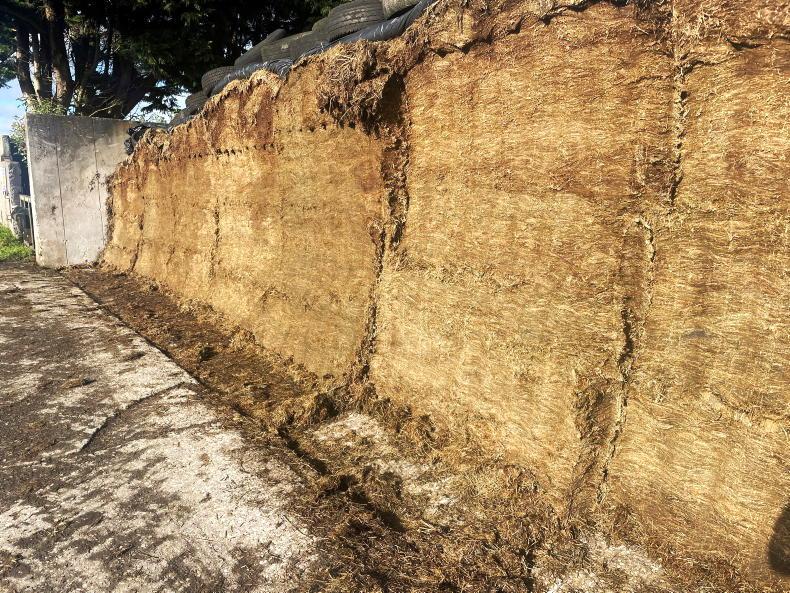Ration Formulation
With animals being housed, many farmers are looking to winter feed purchases. Meal companies are not required to publish the energy content of their rations but are required by law to list ingredients in descending order of inclusion rate.
Energy is the most important feed value when feeding finishing cattle, with protein and energy important when feeding autumn calved cows, sucking calves and weanlings.
Cereals will be highest in energy while soybean meal, rapeseed and maize distillers are all good sources of protein. If purchasing a ration, look for an inclusion rate of the different ingredients to make sure you are getting good value. Keep things as simple as you can with a good energy source, a good protein source and some fibre.
Water supply
I was in a shed where bulls were being fed ad-lib meal and drinkers were changed from small bowls to four foot drinkers on the walls. The farmer saw a marked increase in intake and liveweight gain since installing the larger drinkers, and there are no longer animals waiting to drink.
The new drinkers have a very simple dump valve and are cleaned out once a week to make sure clean water is available at all times. Without a plentiful supply of clean water, animal intakes can be severely reduced during the housing period.
It’s good practice to check drinkers every morning. A 500kg bull eating ad-lib meal could drink up to 40 litres/day, so a good supply in a large enough drinker is essential.
Teagasc/ICBF Indexes webinar
Teagasc and ICBF are holding a Beef Breeding Indexes Webinar on Thursday 2 November at 8pm. The aim of the webinar is to brief farmers on upcoming changes to both terminal index and replacement index. The changes to the indexes include:
Updates to the weights on individual traits to better reflect the markets.Inclusion of carbon to future-proof our breeding policy.Inclusion of new traits to better reflect the changing landscape.Improved methodology in how animals are genetically evaluated.Margaret Kelleher will explain why the indexes are changing and Donagh Berry will outline the changes to the Terminal Index, while Paul Crossan will outline the changes to the Replacement Index. Siobhán Ring will outline how the changes will impact farmers’ breeding choices.
Farmers should make themselves aware of these changes and how it will affect their farming system in the future, so I urge all suckler farmers and pedigree breeders to tune into the webinar on Thursday night at 8pm.
Weather issues
Storm Ciarán put an end to grazing in most parts this week. With more heavy rain forecast, make sure that gutters with clean water are diverted away from tanks to avoid them filling up quickly.
Water from clean yards not in use by livestock should also be diverted to clean water drains to save capacity. With many cattle housed earlier than normal, all tank space may be required come spring 2024.
Ration Formulation
With animals being housed, many farmers are looking to winter feed purchases. Meal companies are not required to publish the energy content of their rations but are required by law to list ingredients in descending order of inclusion rate.
Energy is the most important feed value when feeding finishing cattle, with protein and energy important when feeding autumn calved cows, sucking calves and weanlings.
Cereals will be highest in energy while soybean meal, rapeseed and maize distillers are all good sources of protein. If purchasing a ration, look for an inclusion rate of the different ingredients to make sure you are getting good value. Keep things as simple as you can with a good energy source, a good protein source and some fibre.
Water supply
I was in a shed where bulls were being fed ad-lib meal and drinkers were changed from small bowls to four foot drinkers on the walls. The farmer saw a marked increase in intake and liveweight gain since installing the larger drinkers, and there are no longer animals waiting to drink.
The new drinkers have a very simple dump valve and are cleaned out once a week to make sure clean water is available at all times. Without a plentiful supply of clean water, animal intakes can be severely reduced during the housing period.
It’s good practice to check drinkers every morning. A 500kg bull eating ad-lib meal could drink up to 40 litres/day, so a good supply in a large enough drinker is essential.
Teagasc/ICBF Indexes webinar
Teagasc and ICBF are holding a Beef Breeding Indexes Webinar on Thursday 2 November at 8pm. The aim of the webinar is to brief farmers on upcoming changes to both terminal index and replacement index. The changes to the indexes include:
Updates to the weights on individual traits to better reflect the markets.Inclusion of carbon to future-proof our breeding policy.Inclusion of new traits to better reflect the changing landscape.Improved methodology in how animals are genetically evaluated.Margaret Kelleher will explain why the indexes are changing and Donagh Berry will outline the changes to the Terminal Index, while Paul Crossan will outline the changes to the Replacement Index. Siobhán Ring will outline how the changes will impact farmers’ breeding choices.
Farmers should make themselves aware of these changes and how it will affect their farming system in the future, so I urge all suckler farmers and pedigree breeders to tune into the webinar on Thursday night at 8pm.
Weather issues
Storm Ciarán put an end to grazing in most parts this week. With more heavy rain forecast, make sure that gutters with clean water are diverted away from tanks to avoid them filling up quickly.
Water from clean yards not in use by livestock should also be diverted to clean water drains to save capacity. With many cattle housed earlier than normal, all tank space may be required come spring 2024.






 This is a subscriber-only article
This is a subscriber-only article










SHARING OPTIONS: